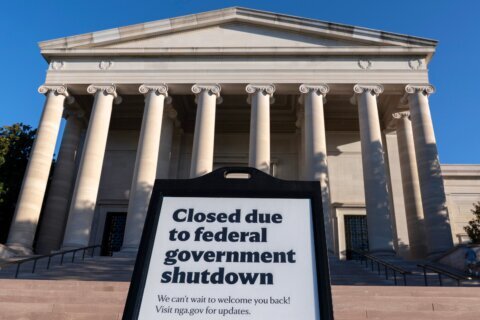WASHINGTON — The Washington Coliseum hosted the Beatles, Janis Joplin and the Rolling Stones, and now the historic building is poised to leap into the future.
Just 60 days after the Beatles 50th-anniversary tribute concert, redevelopment will start on the 207,352-square-foot space. Formerly an ice rink and sporting arena, the Washington Coliseum will eventually be transformed into a mixed-use retail and office building.
The $50 million project should take about 15 months to complete, says Douglas Jemal, founder and president of Douglas Development Corp., which acquired the property in 2004.
“Any building that has a name like the Uline Arena or Washington Coliseum, you know where it is,” he says.
“And the area is amazing. You just don’t recognize it from one day to the next.”
Situated in the quickly gentrifying NoMa neighborhood, the Washington Coliseum’s storied past is as diverse as the acts it once hosted.
An ice house was first constructed on the site in 1931. Additions were made later in the decade by original owner Mike Uline. In 1941, he added an ice arena that hosted the Ice Capades and professional hockey teams.
1941: Mike Uline opens the Uline Arena to host ice hockey and Ice Capades 1948: Uline Arena desegregates 1953: President Dwight D. Eisenhower hosts an inaugural ball at the arena 1959: Arena sold for $1 million and name is changed to Washington Coliseum; Malcolm X speaks at the venue 1964: The Beatles play their first American concert to more than 8,000 screaming fans 1965: Bob Dylan performs at the Coliseum and shoots a photo eventually used for the cover of his greatest-hits record 1967: Riot breaks out during a Temptations concert 1971: The Coliseum is used to temporarily house 1,200 anti-Vietnam War protestors 1994: Purchased by a waste management company 2003: The company filed for a demolition permit, and the D.C. Preservation League adds the building to its Most Endangered Places list 2006: The Coliseum is granted historic status 2004: Douglas Development buys the property 2014: Hosts Beatles 50th-anniversary tribute concert; redevelopment is set to begin later in the year |
The Uline Arena, as it was called in its early years, was one of the first venues in the United States to desegregate, says Rebecca Miller, executive director of the DC Preservation League. It did so in 1948, the same year President Harry S. Truman issued an executive order mandating the military to racially integrate.
By 1959, when the arena changed its name to the Washington Coliseum, it had already become an important setting for African-American cultural and sporting events. Both Malcolm X and Nation of Islam founder Elijah Muhammad spoke there in 1959 and 1961.
But by 1967, the Coliseum was starting a downward decline, Miller says.
Violence during a performance by The Temptations in 1967 was a harbinger of what was to come one year later during the 1968 D.C. riots. After that, concerts were banned at the Washington Coliseum until the Godfather of Go-Go played there in the 1980s, Miller says.
“It fell on hard times,” she says. “It became a roller rink, a faith center, and then a waste management company used it as a trash transfer station” until 2003, when the company applied for a demolition permit.
The D.C. Preservation League instantly stepped in to save the building, which achieved historic status in 2006.
“This is a completely documented building,” Miller says, adding that it is a perfect example of mid-century sports architecture.
The building sits along the Red Line tracks on 3rd and M streets in Northeast D.C., and its vaulted roof makes it one of the most identifiable buildings in the city.
“Once I describe it to people, they’re like ‘Oh, I’ve seen that building before,’ but they never really knew what it was used for,” Miller says.
It’s this sense of history that attracted Jemal to the property, he says.
Douglas Development – which owns high-profile real estate throughout the region, including the Shops of Wisconsin in Bethesda, Md., the Wonder Bread Factory in Northwest D.C. and the Central National Bank Building in Richmond, Va. – will keep the historical integrity of the building, but will add two floors of office space. The ground floor will be retail.
“The neighborhood is just growing, growing and growing,” Jemal says. “As I like to say, go east and find your fortune.”
Follow @WTOP and WTOP Entertainment on Twitter and WTOP on Facebook.







